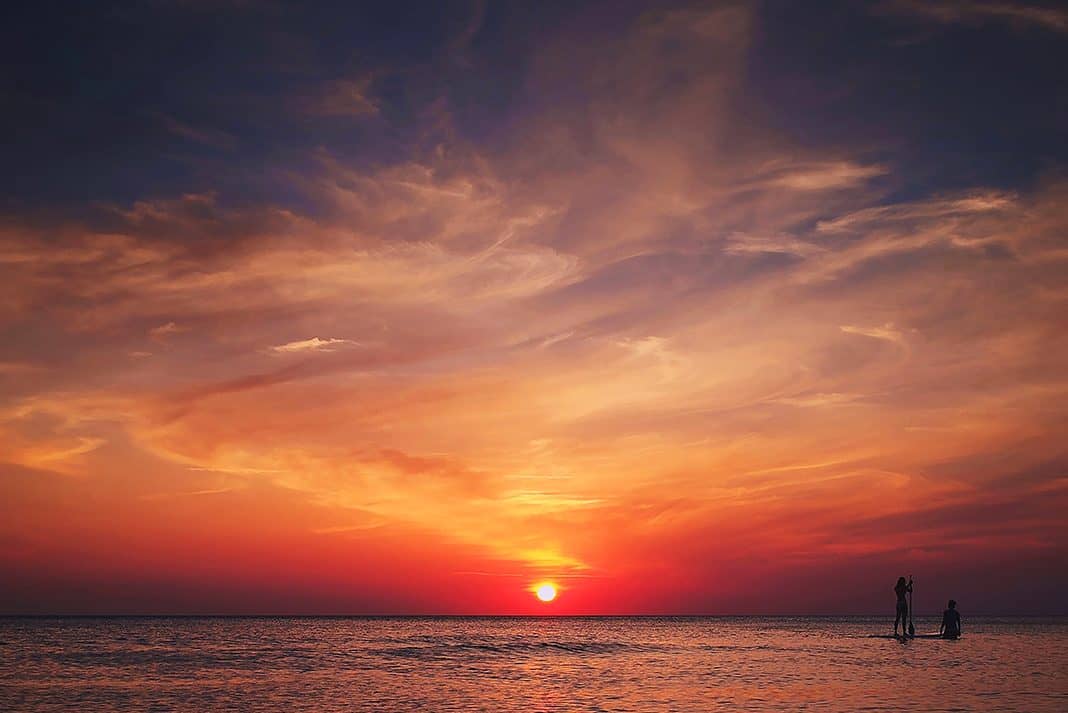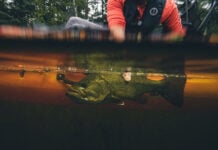Let’s be honest, standup paddling is sexy. The sport is a favorite among advertisers and consumers alike, regularly getting cameos in everything from kitschy car commercials to aspirational travel magazines. Standup paddling burst onto the scene more than a decade ago and is still very much in vogue.
“There’s a romance with SUP like you’re kind of surfing because you’re standing up and feeling the glide,” says Infinity SUP owner Dave Boehne. “Everybody wants to be a surfer.”
Standup paddling rode this wave of hype and exponential growth during its formative years, but recent growing pains and industry-wide belt-tightening have raised questions about the sport’s long-term sustainability. Getting people to try SUP is easy; keeping them coming back for more is tougher.
Of the estimated 3.3 million people who participated in standup paddling in 2017, the Stand Up Paddle Industry Association (SUPIA) reckons 85 to 90 percent did so at the recreational level. While this may not scream SUP addiction, it does suggest the gateway to the broader world of water sports is wide open, says Kristin Thomas, SUPIA executive director.
Thomas believes SUP is helping the growth of other paddlesports, from outrigger canoeing to recreational kayaking. “It’s a gateway to not only the water itself but also to water culture,” she says.
One reason for that is SUP’s accessibility, says Elaine Newbold, co-owner with her husband Randy of Crystal Lake Adventure Sports in Frankfort and Beulah, Michigan. SUP’s broad appeal and low barrier to entry mean more people in the Newbolds’ two retail stores and on the water—in all types of paddlecraft. The cross-fertilization is most evident in their kiosk on Lake Michigan, where they do a brisk rental business in kayaks, SUPs and bicycles.
“We are all in it together. What you paddle doesn’t matter”
“We rent and sell both SUPs and kayaks. And a lot of times when we rent a SUP we’ll rent a kayak at the same time, if one member of the family maybe wants to SUP and another prefers to kayak,” Newbold says, echoing Thomas’ assessment of SUP as a paddlesports gateway. “It’s fun and adventurous, but it’s not intimidating. I love seeing the mom with the kids and the dog on the board. It’s all really fun for the whole family.”
SUP may have started as the cool new kid on the block, but it seems to be settling into its niche as one more way to enjoy getting on the water. And while the SUP industry by itself is not sustainable in every region, working together with the broader paddlesports community presents an exciting opportunity for everyone.
Nowhere has this trend played out more notably than the event space. Whereas marquee races like the Pacific Paddle Games (PPG) placed a heavy focus on the elite side of SUP competition, regional events like the Chattajack 31 welcome all comers. Historically a canoe and kayak event, participation in the Chattanooga, Tennessee, race surged when organizers opened entries to standup paddlers. Now SUPs make up about half the field, and while PPG has been suspended for 2019, the Chattajack 31 sold out 600 spots in only minutes.
“If you look at events having gone by the wayside, they were all geared towards the elite,” says Dan Van Dyke, executive director of both the Standup for the Cure and the Hanohano Ocean Challenge in San Diego. “It’s clear that normal people don’t want to spend $185 to enter a race, so that they can give prize money to the top five guys.”
Most SUP paddlers couldn’t name even one of those top pro paddlers, but you can be sure they know the folks in their local paddling group—no matter whether their vessel of choice is a standup board, outrigger canoe or recreational kayak.
“Inclusivity is the future of our sport,” says Van Dyke. “We are all in it together. What you paddle doesn’t matter.”
Because in the end, it’s the water, not the craft, bringing people together.








